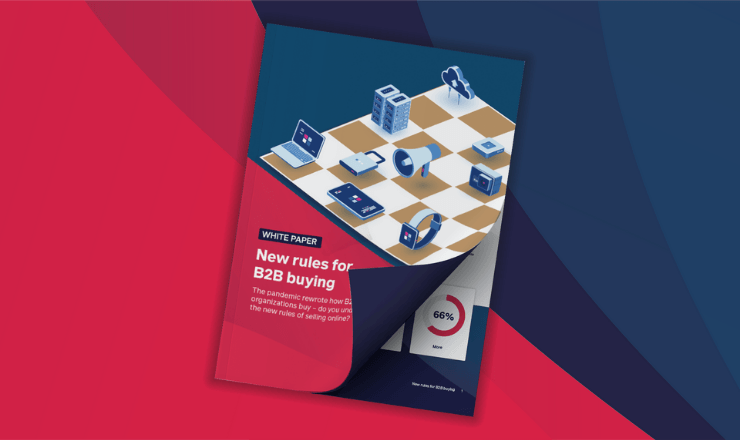

Dropshipping is a method of inventory management and order fulfillment where the retailer or wholesaler transfers customer orders and shipment details to the manufacturer, who then ships the goods directly to the consumer. Dropshipping offers several advantages compared to traditional wholesale trading and has become a popular method for wholesalers and retailers in a wide range of industries.
In 2018, the size of the global dropshipping market was valued at $102.2 billion. By 2020, it had reached a value of $128 billion. Fueled by trends like online shopping and cross-border e-commerce trading, this growth is projected to intensify over the next four years, with the dropshipping market expected to see a 32% CAGR (compound annual growth rate) each year from 2021 to 2026.
Alcohol sales are currently one of the fastest-growing areas of the e-commerce market, and this upward trend is expected to continue over the years to come. As a result, more beer and wine retailers and wholesalers are relying on dropshipping as a way to manage higher order volumes.
Dropshipping can benefit beer and wine sellers in several ways, but may also cause problems if the process isn’t handled correctly. For alcohol wholesalers and retailers who are interested in dropshipping, there are several pros and cons to consider.
Growth of wine e-commerce and dropshipping
Due to the massive surge in online alcohol sales over recent years, many wholesalers and retailers have had their hands full with larger orders and new customers. Dropshipping can help sellers deal with this increasing demand by saving them the trouble of packing, storing, and shipping their goods. This can be especially beneficial for beer and wine sellers, as alcohol has special storage and transportation needs that can drive up operating costs.
With more alcohol retailers and wholesalers recognizing the logistical benefits of dropshipping, and more customers choosing to shop online, e-commerce has become an increasingly large part of the alcohol industry. From 2018 to 2020, the percentage of total winery revenue made through internet sales nearly doubled, increasing from 8.6% to 16.2%. Online sales by grocery stores, alcohol marketplaces (such as Drizly and Wine.com), and specialty retailers have all increased significantly since 2019, as have direct-to-consumer sales by small and medium-sized wineries.
The legality of dropshipping alcohol
Legal regulations are one of the most notable potential challenges for online wine sales. The laws for shipping alcohol in America vary by state, and violating these rules can lead to major consequences for sellers, such as fines and liquor license revocation. Wholesalers and retailers must be aware of their states’ unique rules and regulations for online alcohol sales before deciding if dropshipping is right for them.
Some state regulations only allow certain types of alcohol to be shipped, and many only allow for the direct shipment of wine. Several states also have rules defining where online alcohol orders can be shipped. For example, West Virginia requires that direct liquor shipments be sent to a licensed liquor retailer in the purchaser’s market zone, rather than straight to their home.
For sellers who plan on shipping alcohol across state lines, it’s critical to know the regulatory requirements of every state where they’ll be doing business. Many state governments require wineries to obtain an out-of-state winery direct shipper’s permit to legally send wine to their residents. Different states have different eligibility requirements for these permits, and sellers must make sure to maintain compliance with every state where they wish to send alcohol.

Learn how to create a successful dropshipping strategy
Get 10 tips on how to create a successful dropshipping strategy for your company.
Dropshipping foodstuffs
In addition to reshaping alcohol sales, the growing popularity of online shopping has also led to major changes in the food and beverage industry. From 2020 to 2021, e-commerce grocery sales in the U.S. increased significantly. By 2026, online sales are projected to make up more than 20% of the total U.S. grocery retail market. Dropshipping food can be highly convenient for sellers, but there are some potential problems associated with the process.
One such problem is supplier relations. Companies that dropship food must vet their suppliers for food quality and hygiene. Because dropshipping involves sending food directly from the supplier to the consumer, it can hinder your ability to perform quality control. Using an untrustworthy supplier could potentially lead to customers receiving tainted food, which can irreversibly harm your business’s reputation.
Another major problem that comes with dropshipping food is spoilage. Highly perishable items, like products that contain meat or dairy, may spoil in transport if they aren’t stored properly. Many foods must be kept refrigerated or frozen while in transport, which can further increase risk and complicate the shipping process. There is also a risk of damage associated with shipping food, especially for products with glass containers. When food products spoil or are damaged in transport, it can delay shipments and lead to costly inventory loss.
Because of these factors, dropshipping will not always be beneficial for all types of food sellers. When determining if it’s the right strategy for your business, it’s critical to consider the types of food you’ll be shipping, how far you’ll be sending it, and what suppliers you’ll be working with.
Dropshipping beer vs. wine
If you’re thinking about utilizing dropshipping for your alcohol business, you must first consider the types of alcohol you’ll be selling. Beer and wine each have unique transportation, regulatory, and marketing considerations, and as a result, the dropshipping process for each beverage must be handled differently.
Depending on your state and your customer base, you may need separate licenses to dropship wine and beer respectively. In many states, dropshipping beer directly to consumers is not allowed at all, while dropshipping wine is legal for licensed businesses. Because of this, beer may only be feasible for business-to-business dropshipping in many states.
Beer and wine also have varying storage needs that can impact how they’re transported. For example, corked wine bottles should generally be stored on their side while beer bottles must always be kept upright. By understanding the different advantages and drawbacks of dropshipping beer and wine, you can more accurately determine the best inventory handling methods for each area of your business.
How to dropship alcohol
While different beverages have regulatory and logistical considerations, there are several fundamental steps that all businesses must take to start dropshipping alcohol:
- Build an online store: To make money dropshipping, your business needs a serviceable e-commerce platform or ‘virtual store’ where people can shop and pay for their purchases. This site should be secure, easy to use, and incorporate an aesthetic that matches your brand.
- Conduct competitor research: Online alcohol sales are quickly becoming a more competitive area of business. Studying how successful competitors in your industry use dropshipping can provide you with useful insights regarding marketing, branding, and customer service. There are several ways to do this, including analyzing feedback from the competitor’s customers and monitoring traffic on their web pages.
- Find a reputable supplier: When it comes to dropshipping, the supplier you use has a major role in determining your customers’ experience. When you’re vetting potential suppliers, studying metrics like product reviews and shipping times can help you identify red flags and ensure the quality of service.
- Apply for permits: In many cases, dropshipping alcohol will require your business to have more than one specialized license or permit. Selling alcohol online without proper licensure can lead to your business being quickly shut down by state regulators. Before you begin dropshipping, it’s critical to identify and obtain all the permits you need in all states where you’ll be doing business.
- Monitor compliance: In the world of alcohol sales, maintaining compliance is an ongoing process. Over time, as laws change and you expand into new jurisdictions, your business’s regulatory needs will likely change. Tracking compliance can help you protect your business’s reputation and avoid penalties from regulators.





